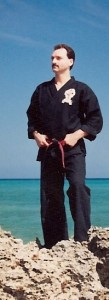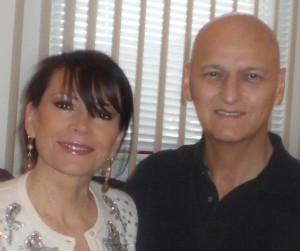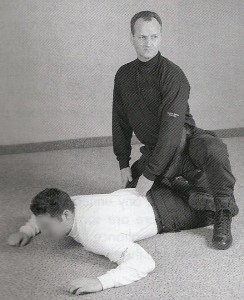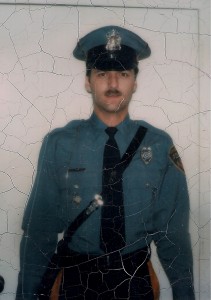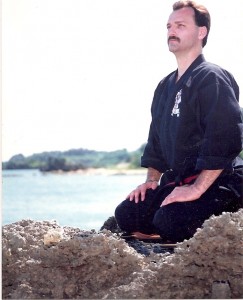MMA – The Good, the Bad, and the Ugly – Part 1
The following article (Part 1 of a 2 part series) was inspired by a number of comments posted by a serious Black Belt instructor who studied with one of my direct students and then expanded the ground aspect of his own MA experience by studying Brazilian Jiu-jitsu. I have slightly modified some of the excerpts from my responding comments order to share the content of our discussion with our general readers.
This instructor explained the challenges he endured when he attempted to add an MMA program to his curriculum, subsequently resulting in a significant degree of dissatisfaction. You can find his original comments written under my previous article titled, “MMA vs. Tradition – Part 4“.
In these comments submitted by my second generation student, he began his discourse using the term “Traditional” when referring to the his use of the USA GoJu system of Martial Arts. My responses began in that context.
What is “Traditional”?
The issue that I would like to point out first is a discrepancy. I am suggesting a more accurate use of the term, “traditional”. First, USA GoJu has been anything but “traditional”. It has been a hybrid system since Grand Master Peter Urban broke from Yamaguchi’s GoJu-Kai in the early 60’s. Remember that he studied under three very accomplished Masters, Richard Kim (Okinawan Shorinji-Ryu Kempo), Gogen Yamaguchi (Japanese Goju-ryu). and Masatatsu Oyama (Kyokushin, which included elements of Shotokan, GoJu-ryu, and Thai boxing).
In reality, the MA taught by GM Urban was a hybrid system. It was based on the primary and foundational concepts, principles, and kata of GoJu-ryu, yet included pertinent elements that he learned from GM Kim and GM Oyama. In addition, GM Urban was very innovative, adding his own unique flair, some that came from his own creative mind and much that resulted from some very practical research and study.
The 1st MMA
The above description is the heritage of what some presently call, USA GoJu. It was arguably one of the first real “Mixed Martial Arts” in the USA. The most profound difference, however, was this system was truly taught as a Martial “ART”, not simply a conglomeration of Martial “TECHNIQUES”. (more…)
Avviso – Aggiornamento Sito
Vi ringrazio per la vostra pazienza e mi scuso, se caso mai, avete incontrato disagi visitando questo sito nel corso degli ultimi giorni, ma ho fatto alcuni aggiornamenti importanti per contribuire a renderlo più facile da visitare.
E’ stato introdotto un sistema di aggiornamento ai Commenti. Questo permette che ogni commento o risposta resti sempre collegato al post di partenza ogni qualvolta che qualcuno vi scrive, la casella di commento si espanderà automaticamente. C’è anche una nuova funzione che consente che i Commenti vengano pubblicati direttamente su Facebook, questo vi permette inoltre di aggiungere immagini insieme ad essi.
In alto a destra, sul Pannello laterale, è possibile selezionare la versione in inglese o in italiano dell’intero contenuto del sito. Il sito è completamente bilingue con la traduzione italiana di ogni singola pagina, inoltre ogni articolo/post a tema è stato collocato in sequenza sulla sua propria pagina, sotto la sezione italiana. In questo modo troverete anche i loro rispettivi “Commenti” in italiano. (more…)
Announcement – Site Upgrades
Thank you for your patience over the last few days as we have added some significant upgrades to help make our site more user friendly.
We have added an upgraded Comment system. This allows Comments and responses to remain posted together when replying directly to any comment. The Comment box will now expand as you write. There is now a feature that allows Comments to be posted directly from Facebook. It also allows for photos to be added with your Comments.
At the top right on the Side Panel you can select either English or Italian translations of our site content. Our site content is now fully bilingual with the Italian translation of each Page and Article (Post) on its own separate pages, all grouped together under the Italian section. In this way the “Comments” in Italian will also match the translated articles. (more…)
Il “Lottatore da Strada” vs L’Artista Marziale
Vi siete mai posti la domanda di quale sarebbe il risultato in un combattimento tra una “lottatore da strada” e un artista marziale? Mi sono sentito fare questa domanda in molte occasioni insieme al conseguente dibattito che in genere il quesito scaturisce. Nell’ articolo che segue, proverò a far chiarezza su questa annosa questione.
Nel corso della mia carriera professionale, che mi ha visto impegnato in vari ruoli: artista marziale, direttore nella Sicurezza operativa e di consulenza, ufficiale di polizia, e anche come privato cittadino, ho avuto l’opportunità di osservare, e registrare varie situazioni che mi hanno dato una prospettiva che va aldilà della semplice speculazione o teoria.
In qualsiasi modo vogliamo affrontare o approfondire questo argomento, dobbiamo partire comunque da un dato di fatto, primo: lo scontro di vita reale è di solito una questione fra chi vi partecipa e fattori logistici che ne possono influenzare i risultati.
Se cominciamo a cambiare queste variabili, allora anche il risultato è destinato a cambiare. Pertanto, è importante partire dalla consapevolezza che le nostre conclusioni sono più una questione di probabilità, piuttosto che una realtà concreta. Sarebbe un errore presumere che, ipoteticamente, questi risultati rimanessero gli stessi in una o in tutte le occorrenze.
The “Street Fighter” vs. the Martial Artist
Have you ever been presented the question, “What would be the results in a confrontation between a “street fighter” and a martial artist?” I have been challenged with this question on many occasions along with the subsequent debate that typically follows. In the following discussion, perhaps we can shed some light on this age-old question.
Throughout my career functioning in roles as a Martial Artist, Security Operative/Consultant, as a Police Officer, and as a private citizen, I have had the opportunity to observe, experience, and record various situations which have given me a perspective that is beyond simple speculation and theory.
In any thorough discussion of this subject we must begin with the following fact of reality. First, any real life confrontation is primarily a matter between the specific individuals participating along with the logistical factors that may influence the results.
When we begin to change these variables, then the result is also likely to change. Therefore, it is important to begin with the realization that our conclusions are more a matter of probability rather than a concrete reality. We would be in error to assume that, hypothetically, such results would remain the same in any or every occurrence.
“I Segreti dei Maestri” – Le Tre Condizioni Primarie
“Quando la vita ti mette in mano limoni , fai la limonata …”
Man mano che la nostra vita scorre, passiamo attraverso delle fasi di sviluppo che, se vogliamo esaminarle piu’dettagliatamente, possiamo suddividere in: sviluppo fisico, intellettuale , emozionale e spirituale. Questi quattro “pilastri” sono in modo figurativo le “gambe” che supportano il “tavolo” che costituisce ciascuna delle nostre vite.
Per un Artista Marziale serio, raggiungere la meta del suo viaggio, significa in sostanza, aquisire “equilibrio” in ognuna di queste aree di sviluppo. Questa “ricerca” in particolare, fa la differenza tra un “Artista marziale” e un “Tecnico marziale”. Un artista marziale deve essere anche un tecnico marziale, tuttavia, un tecnico marziale non deve necessariamente essere un artista marziale.
Questo concetto di equilibrio si costruisce con la contrapposizione e l’integrazione di tutti e quattro questi aspetti interdipendenti. Il ruolo del Maestro di AM è quello di creare nel Dojo, insieme con le attività pertinenti, un ambiente che fornisca terreno fertile per lo sviluppo di ciascuno di questi quattro pilastri. (more…)
“Secrets of the Masters” – the Three Primary Conditions
“When life hands you lemons, make lemonade…”
As we proceed through life, each of us passes through similar stages of development. We can further subdivide each of these stages to examine Physical Development, Intellectual Development, Emotional development, and Spiritual development. These four “pillars” are the figurative “legs” that support the particular “table” that constitutes each of our lives.
For the serious Martial Artists, the overall journey ultimately becomes a quest to achieve “balance” in each area of development. This “quest” particularly distinguishes the difference between a “Martial Artist” and a “Martial Technician”. A Martial Artist must also be a Martial Technician, however, a Martial Technician is not necessarily a Martial Artist.
This concept of balance is pursued further by the contrasting and integration between all four of these interdependent facets. The role of the MA Master is to create an atmosphere in the Dojo, along with pertinent activities, that provide a fertile environment for development of each of these four pillars. (more…)
Law Enforcement and Martial Arts – the “Best” Connection? – Part 3
…this is PART 3 and the final article of this 3 part series.
Liability Issues
A significant issue that has come to the forefront concerning LE physical encounters is that of both Criminal and Civil Liability. The proper “Use of Force” has advanced “front and center” as a primary concern. Along with other changes in the society where we presently live, this new “information age” presents unique challenges where any of us could be taped on a video with a cell phone and end up on “You Tube” within minutes of the occurrence.
Changing Society
The United States has become an ever increasing litigious society with less and less respect and consideration for the LE officer. Many times the officer has only seconds to make a decision that may affect his safety and/or of that of others while the news media and even the courts have days, weeks, and months to scrutinize every little nuance of those decisions. Although some laws and precedents exist that provide some support for the officer who acts within the law, the experience of enduring all the public and legal scrutiny following any questionable encounter can be career changing for many officers. It can also quickly and easily undermine the credibility and effectiveness of any given LE agency. (more…)
Forze dell’Ordine e Arti Marziali – Il “miglior” rapporto? – Parte 3
… Questa è la 3a e ultima parte di questa serie.
Questione di responsabilità
Una questione importante che è venuta alla ribalta riguardo gli scontri fisici delle FO è quella di stabilire se, nel caso, la responsabilità per loro sia penale o civile. Il giusto “uso della forza” è la prima preoccupazione che è stata avanzata e ha messo tutti “sull’attenti”. Insieme ad altri cambiamenti nella società, in cui stiamo vivendo, questa nuova “era dell’informazione” presenta sfide uniche in cui ognuno di noi potrebbe essere registrato su un video con un comune telefono cellulare e finire su “YouTube” in pochi minuti dell’evento.
Una società in evoluzione
Gli Stati Uniti sono diventati una società sempre più litigiosa, con sempre meno rispetto e considerazione per i rappresentanti delle Forze dell’Ordine. Molte volte un ufficiale ha pochissimi secondi per prendere una decisione che può influire sulla sua sicurezza o su quella altrui. Invece i media, o anche i tribunali hanno settimane, mesi o anni di tempo per controllare ogni sfumatura prima di prendere una decisione. Anche se, alcune leggi e alcuni precedenti esistenti forniscono un sostegno per l’ufficiale che agisce all’interno della legge, l’esperienza di essere giudicati pubblicamente e legalmente, dopo uno scontro discutibile, può cambiare la carriera a molto poliziotti. Può anche rapidamente e facilmente compromettere la credibilità e l’efficienza di qualsiasi arma delle Forze. (more…)
“I Segreti dei Maestri” – La Visione Chiara
“Il coltello taglia, ma non può tagliare se stesso , l’occhio vede, ma non può vedere se stesso.”
Man mano che la nostra vita si svolge continuiamo ad accumulare conoscenza. Si tratta di una combinazione tra conoscenza di “prima mano” e conoscenza di “seconda mano”. Personalmente definisco conoscenza di “prima mano” le informazioni che assimiliamo ed elaboriamo attraverso l’esperienza personale. Questo è il “c’ero, l’ho fatto” ed è il tipo di informazione che ha peso sul nostro concetto di vita in generale.
Al contrario, definisco la conoscenza di “seconda mano”, l’accumulare informazioni che ci arrivano da altre fonti. Queste fonti cominciano a partire dalla nostra famiglia (madre, padre, fratelli, ecc) poi amici, colleghi, e più tardi da insegnanti/superiori (in un modo più formale). Fonti meno dirette possono includere scritti, audio o materiale video. A mio parere, è estremamente importante identificare accuratamente la credibilità di tutte le fonti di ogni conoscenza che ci arrivano da “seconde mani”.
Nel valutare la credibilità delle informazioni di prima mano, ognuno di noi ha la tendenza a dare automaticamente a queste informazioni credibilità . Questo succede perché la nostra prospettiva di vita è stabilita sulla base di ciò che vediamo attraverso i nostri occhi, non attraverso gli occhi degli altri. E’ di cruciale importanza ricordare che, la validità delle conclusioni tratte dalla elaborazione di queste informazioni, è la premessa iniziale per avere una “visione chiara” delle cose. (more…)
